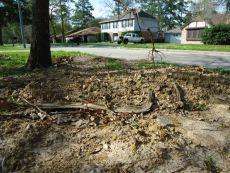I wrote an article for a website that didn’t get used. It happens sometimes, no biggie. But this particular article is one that I did a great deal of researching before I wrote and actually talked to professionals that I know personally. So, I want to share the blogger’s version (which means I’ve dressed it down and added my two cents where I otherwise would have held my tongue a bit).
The Skinny on Landscaping and Outdoor Projects
(DIY vs. The Contractor on the most common outdoor ventures)
Everyone loves a good do it yourself project. Pinterest and the TLC channel have made them more popular than ever. Home Depot and Lowe’s are certainly your helpful neighborhood DIY Home Project instigators and dare I mention the keeping up with the Joneses mentality amidst a major recession.
However, there are projects that are just not do it yourself friendly and with all the handy books, websites, and television channels, it’s hard to know which are for you and which warrant a good old fashioned contractor – especially when we’re dealing with our lawn and garden.
Re-Sodding Your Grass

Actual “before” photo of our front yard.
Landscaping is the most commonly chosen as a do it yourself renovation. Ironically, people hire companies to mow their lawns, weed their gardens, and trim their hedges, but when it comes to things like re-sodding their grass, more often than not, they opt to do it themselves.
Despite the process being fairly simple, though, most landscapers will encourage customers (and friends) to hire out a company. You might assume it is so they can get more business, but they are honestly advising this in your best interest. A landscaper can get grass at a discounted rate, already has the equipment on hand, and are experienced and efficient.
Tito Ortega of Ortega Lawn Care recommends calling your local landscaper for any grass project
“over a full pallet. For what someone pays for a pallet of grass, soil, and renting tools they don’t have, I charge more or less the same and all they have to do is pick up the phone. And I provide a warranty, plus informational packets on how to care for it properly.”
I had his help when I resod my own lawn after an extensive plumbing project in my front yard and can vouch for his sentiments. The process is easy, sure, but we still had to rent tools. I had to pay regular Joe Schmo prices for my grass – instead of fabulous bulk prices that businesses have access to. Over all I felt all sorts of useful, my grass is beautiful, but I didn’t really save any money by doing it myself.
Pruning Trees and Shrubs
A lot of people prune their own trees and shrubs, but Gardener Joe in Washington State of PangeaGardenscapes.com encourages tree owners to call a professional. Many do-it-yourself sites, such as http://www.diyornot.com, propose the opposite, reporting that even after you purchase the sheers and appropriate tools you’ll still save 56% on just the first pruning.
Yet, Gardener Joe has some advice concerning that:
“Many people try to keep plants small which never works. A plant is programmed to grow to a mature height. Many times people buy a plant not understanding the maturity of said plant. Also topping a tree and some shrubs are a no-no. I belong to plant amnesty and if you check out plant amnesty.org it has many examples of different plants. So in my business I offer garden coaching services. I show how to prune and why. As well as my garden class I give once a month at our local library.”
So if you ar e going to trim your own trees and shrubs, do the research and know your plant. Otherwise, spend the extra dime to call a professional who can teach you about what you have in your yard so you can help your plants live long, healthy lives for the expense you’ve already put into having them there in the first place. Many people prematurely kill off plants that would have lasted for generations by cutting them back too far and not giving them the appropriate room to grow. Homeowners who plant to stay in the same place for thirty plus years should be very conscientious of this issue, otherwise they’ll find themselves spending thousands more over the lifetime of the property than they would if they spent a little bit up front consulting someone. For more tips, follow Joe’s Facebook Page.
e going to trim your own trees and shrubs, do the research and know your plant. Otherwise, spend the extra dime to call a professional who can teach you about what you have in your yard so you can help your plants live long, healthy lives for the expense you’ve already put into having them there in the first place. Many people prematurely kill off plants that would have lasted for generations by cutting them back too far and not giving them the appropriate room to grow. Homeowners who plant to stay in the same place for thirty plus years should be very conscientious of this issue, otherwise they’ll find themselves spending thousands more over the lifetime of the property than they would if they spent a little bit up front consulting someone. For more tips, follow Joe’s Facebook Page.
We trim our own shrubs, but not our own trees. The danger factor isn’t worth the risk when you’re talking about limbs falling from the heavens onto things like your car or the roof of your house. Even with the shrubs, I see Gardener Joe’s point. We did some research into ours and learned how to take care of the shrubs we inherited with our house – when the old owners came by for a visit they gasped, “We could never get them to bloom like that when we were here.” According to a lot of professional landscapers and truly green thumb kind of people, many people think they are over or under watering when really they are trimming the hedges incorrectly. Save yourself the cost of new plants every few years and have a professional teach you how to do it right – whether that professional is from the pages of a book or has been hired to come out and talk to you by appointment.
Building a Fence
You may need to call a contractor for planting new grass and trimming trees, but you’re probably looking for what you can do yourself. It’s far more cost efficient for you to mow your own lawn and weed your own garden, but the other best DIY option for outdoors is to build your own fence. Everyone should get that experience in before they die and it’s definitely worth the savings on your wallet.
Most landscapers and handymen will charge you roughly 30% more than the cost of materials. That’s about the difference of an $800 fence and a $1200 fence, just to have someone else do it. Though quality work might be worth that, there’s nothing worse than looking out at a fence you paid too much for that doesn’t look quite the way you’d like.
My husband was extremely busy with work the year after Ike and the hurricane had taken down our whole side fence. We hired s omeone to take care of it because we had three dogs and needed it up sooner rather than later. We shopped around, we called the most affordable handyman, he had good reviews online. My husband still complains about that fence. We overspent and the fence boards are spaced too far apart. It drives us crazy. Last year, when a tree took down another section in the opposite corner of the lot, we built it ourselves.
omeone to take care of it because we had three dogs and needed it up sooner rather than later. We shopped around, we called the most affordable handyman, he had good reviews online. My husband still complains about that fence. We overspent and the fence boards are spaced too far apart. It drives us crazy. Last year, when a tree took down another section in the opposite corner of the lot, we built it ourselves.
The most cost efficient of fencing options is a neighbor friendly fence, where each neighbor takes on the cost of the panels that face their yard and each section alternates. I’m especially partial to these because I had one growing up. It makes the most economical and hospitable sense. Get to know your neighbors, be old-school, built it together.
No matter what your project, remember to research materials and processes, be realistic about your abilities and your time, and call around for multiple quotes. Weigh the expense up front against the lifetime expense of the plants or space in question, and plan carefully.
Of course, this is primarily a book blog, so I have to share my favorite DIY Landscaping books, which are pretty much gardening specific because I’m a gardener.
The Complete Book of Practical Gardening
Small Gardens
Square Foot Gardening by M. Bartholomew
Low Maintenance Gardening
Herbs and the Kitchen Garden by Kim Hurst
To read articles that DO get used by Money-fax.com, check out my Freelance Writer page and follow the links.
